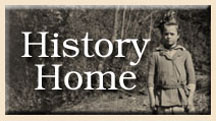

The Summer Workshop of Crafts and Community Recreation
From almost the moment that Pi Beta Phi first established its settlement school on the banks of the Little Pigeon River in February 1912, the fraternity sought to bring economic stability to the citizens of Gatlinburg, Tennessee by promoting, and in some cases reviving entirely, the production and sale of native Southern Appalachian handicrafts. In this endeavor, the fraternity was more than successful. Thanks to a network of Pi Beta Phi alumnae clubs, which marketed handicrafts on behalf of Gatlinburg craftspeople, as well as the skilled leadership of arts and crafts instructors such as Otto J. Mattil (woodworking) and Winogene Redding (weaving), among others, the fraternity built up one of the most lucrative cottage industries in American history. “Arrowcraft” profits saw many a Gatlinburg family through the economic hard times of the Great Depression, providing them with steady income at a time when Americans in more prosperous regions of the country were struggling to find gainful employment.
Given its long-standing commitment to handicrafts production and promotion, then, it comes as no surprise that the fraternity viewed the Sevier County School Board’s April 1943 decision to assume financial responsibility for basic primary and secondary education in Gatlinburg--a move that was more symbolic than substantive--as an opportunity to redirect its resources towards “a finer type of scholastic service.” This entailed providing settlement school students with a comprehensive program of “diversified arts and crafts,” at least at first; but in a relatively short time, it grew to mean much more. Taking a cue from the University of Tennessee’s Dean of Home Economics, Jessie Harris, who had long-dreamed of establishing a university-affiliated crafts program in Gatlinburg, the Settlement School Committee decided to “sponsor an off-campus workshop each summer on the grounds.” The first session, dubbed tentatively the “Summer Workshop of Crafts and Community Recreation,” was set to convene on June 11, 1945.
Soon thereafter, all became hustle and bustle at the settlement school. Staff members ushered students out for the summer, and then set immediately to the tasks of converting the now-vacant school buildings into dormitories. Here, thankfully, the University of Tennessee stepped in to offer assistance. At Harris’s request, surplus war materials stored at the university--mostly army cots--were loaded onto trucks in Knoxville and shipped to the settlement school. On receiving the cots and other supplies, staff members used them to create functional, if not altogether comfortable, student quarters. Equipping the classrooms was much more simple, for the settlement school possessed enough looms, woodworking tools, and other arts and crafts equipment to meet students’ and instructors’ needs. All that was needed was to move everything to a central location on campus, a job that fell into the capable hands of settlement school caretaker and Gatlinburg native Arlie Watson.
That the living conditions were a bit rustic, and the course offerings a bit limited, appears not to have bothered the students. “From the beginning . . . to the end on July 18,” wrote students and Director of Industrial Arts of the New Mexico State Department of Education, Gail Barber, the Summer Crafts Workshop “was one of the most pleasant and profitable school sessions I have ever attended.” All told, fifty students from nineteen states attended the workshop that summer; and while they came from a variety of backgrounds (there were, among the student body, home demonstration agents, arts and crafts teachers, active Pi Phis, community recreation leaders, and some who were “not interested in credit but [were] attending only to make beautiful things for the joy of making and the pleasure of using”), all were interested in the “flowering of . . . creative ability.” And flower they did. Students poured their talents into woodworking, weaving, and textile design projects, and even found time to participate in community recreation courses. So engrossed were they in their work, in fact, that the settlement school staff faced undue difficulty adhering to a tight schedule.
Gatlinburg’s location near the entrance to the Great Smoky Mountains National Park served only to enhance students’ experience. In fact, the workshop staff organized a Fourth of July hike in the Park as a special treat, led by none other that Gatlinburg’s own “Roamin’ Man of the Mountains,” Wiley Oakley. According to Gail Barber, Oakley guided them “along a number of the most beautiful mountain trails before stopping the group for lunch under ‘an old Appalachian Trail shelter.’” As she and her fellow students prepared their meals over a crackling fire, inhaling the sweet aroma produced by “scented . . . balsam boughs,” they “could easily imagine the Indians and early settlers as they traveled along the trail.”
If students were pleased with the workshop, the Settlement School Committee was ecstatic. “Pi Beta Phi’s ‘jewel,’” wrote chairman Mildred Sale in September 1945, “now glistens with a new brilliance, for its influence and scope have been enlarged in almost untold measure, [with] each student serving as a newly-cut facet, reflecting in her home community the enthusiasm felt at Gatlinburg.” Already, plans were in the making for a second and even a third workshop, both of which, Sale reasoned, would be even more successful than the first. “It will be well for all interested Pi Phis to get reservations,” she warned her fraternity sisters, “as, in all probability, it will be necessary to limit enrollment.”
Over the next twenty-five years, and thanks in large part to the wise leadership shown by University of Tennessee Professor of Craft Design Marian Heard (who assumed directorship in 1947), the Summer Crafts Workshop developed from its humble origins into an internationally-renowned arts and crafts program. And although no one knew it at the time, the fraternity had sown the seeds of Arrowmont, the year-round arts and crafts institute that would eventually occupy the grounds of the original Pi Beta Phi Settlement School.
 |
|